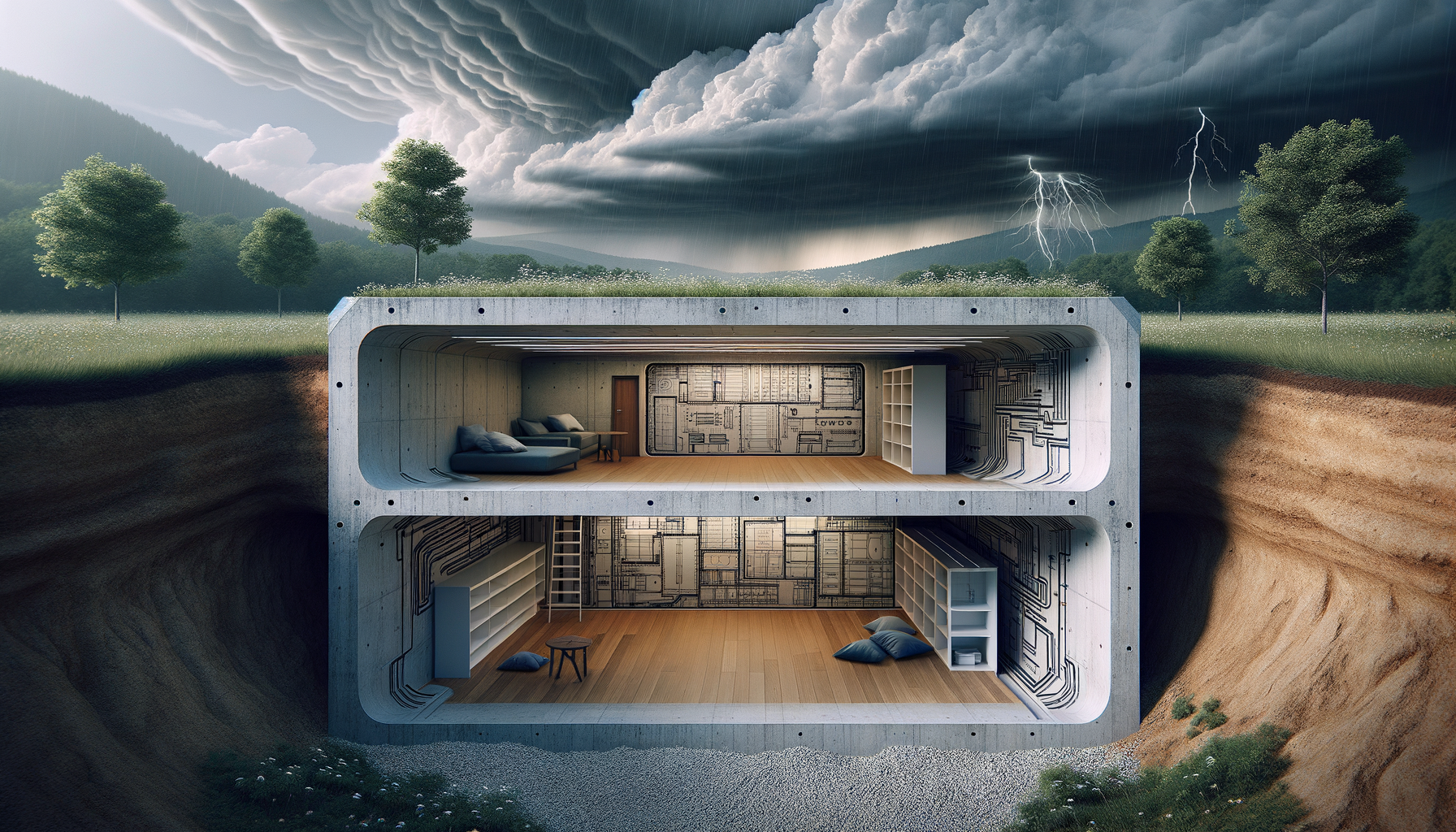
In-depth Exploration of Storm Shelters
Understanding the Need for Storm Shelters
As climate change continues to influence weather patterns globally, the frequency and intensity of storms are increasing. Storm shelters have become an essential part of safety planning for many households, particularly in regions prone to severe weather events like tornadoes and hurricanes. These shelters provide a secure place for individuals and families to seek refuge during these natural disasters.
Statistics show that areas in the United States, such as Tornado Alley, experience numerous tornadoes every year, making storm shelters a necessity rather than a luxury. The Federal Emergency Management Agency (FEMA) recommends storm shelters as a reliable safety measure, especially when evacuation is not an option. The peace of mind that comes with having a designated safe space during a storm cannot be overstated.
Storm shelters are designed to withstand extreme wind speeds and flying debris, which are common during tornadoes and hurricanes. They are constructed following specific guidelines to ensure maximum safety and protection. As such, understanding their importance and functionality is crucial for anyone living in areas susceptible to severe weather.
Types of Storm Shelters
Storm shelters come in various forms, each designed to meet different needs and preferences. The two primary types are above-ground and below-ground shelters. Both types have their advantages and are constructed to meet safety standards.
Above-ground shelters are typically made of reinforced steel or concrete and are designed to be accessible, especially for individuals with mobility issues. They can be installed in garages or as standalone units in backyards. Below-ground shelters, often referred to as storm cellars, are built underground, providing additional protection against flying debris. These shelters are usually accessed via a hatch and are ideal for areas with ample outdoor space.
Another category includes community shelters, which are larger and designed to accommodate multiple families or an entire community. These are often found in schools, churches, or community centers. The choice between these types depends on factors such as space availability, budget, and personal preference.
Construction and Installation Considerations
When constructing or installing a storm shelter, several factors need to be considered to ensure its effectiveness and safety. The location of the shelter is critical; it should be easily accessible from the main living areas of the home. For below-ground shelters, the soil type and water table levels must be assessed to prevent flooding and structural instability.
The materials used in construction are equally important. Reinforced steel and concrete are commonly used due to their strength and durability. These materials can withstand the intense forces of a storm, ensuring the shelter remains intact even under extreme conditions.
Installation should be carried out by professionals who are familiar with local building codes and FEMA guidelines. This ensures that the shelter meets all safety requirements and provides the necessary protection during a storm. Additionally, regular maintenance and inspections are recommended to keep the shelter in optimal condition.
Cost and Financing Options
The cost of installing a storm shelter can vary significantly based on the type, size, and materials used. On average, a basic above-ground shelter might cost between $3,000 and $7,000, while below-ground shelters can range from $4,000 to $10,000. Community shelters, being larger, are generally more expensive.
Financing options are available to help homeowners afford these protective structures. Some states offer grants or subsidies to offset the cost of storm shelters, especially in high-risk areas. Additionally, certain insurance policies may provide discounts for homes equipped with certified storm shelters.
For those considering the investment, it’s important to weigh the cost against the potential risk and the peace of mind that comes with having a safe space during severe weather events. Consulting with local authorities and insurance providers can provide further insights into available financial assistance and incentives.
Conclusion: Ensuring Safety and Peace of Mind
In conclusion, storm shelters are a vital component of disaster preparedness for individuals and communities in storm-prone regions. They offer a reliable means of protection against the unpredictable forces of nature. Understanding the different types, construction considerations, and financial aspects is essential for making an informed decision about installing a storm shelter.
As we face the challenges of a changing climate, prioritizing safety through the use of storm shelters can significantly reduce the risk of injury and loss of life during severe weather events. By investing in a storm shelter, homeowners not only protect their loved ones but also contribute to the resilience of their communities.

